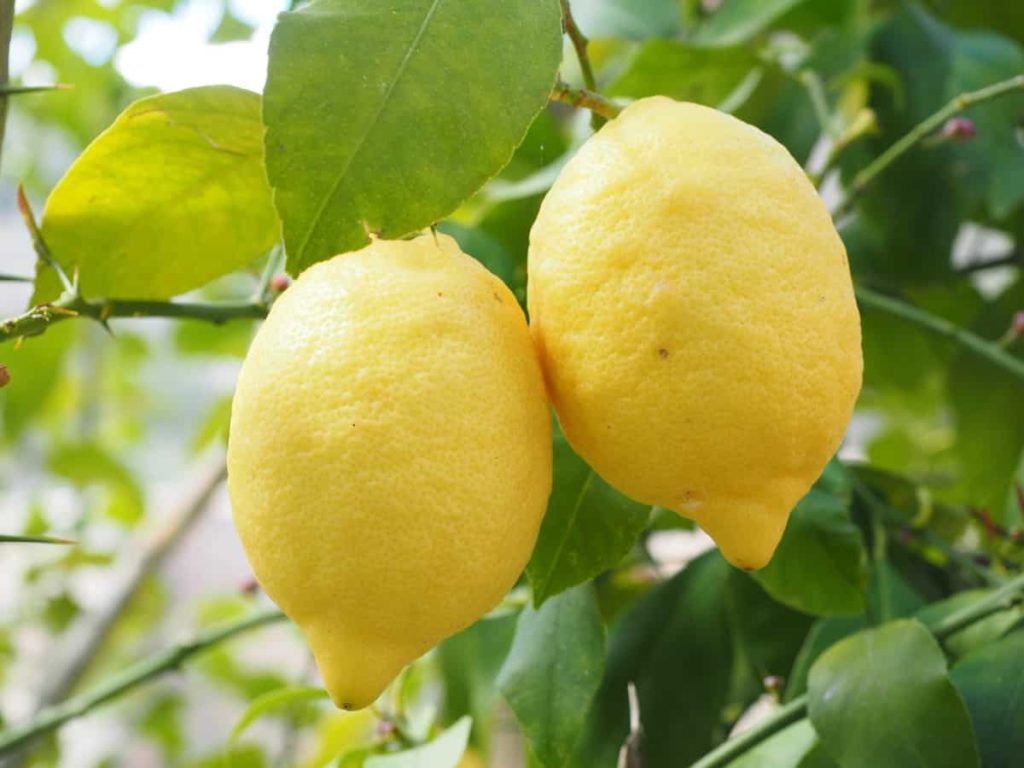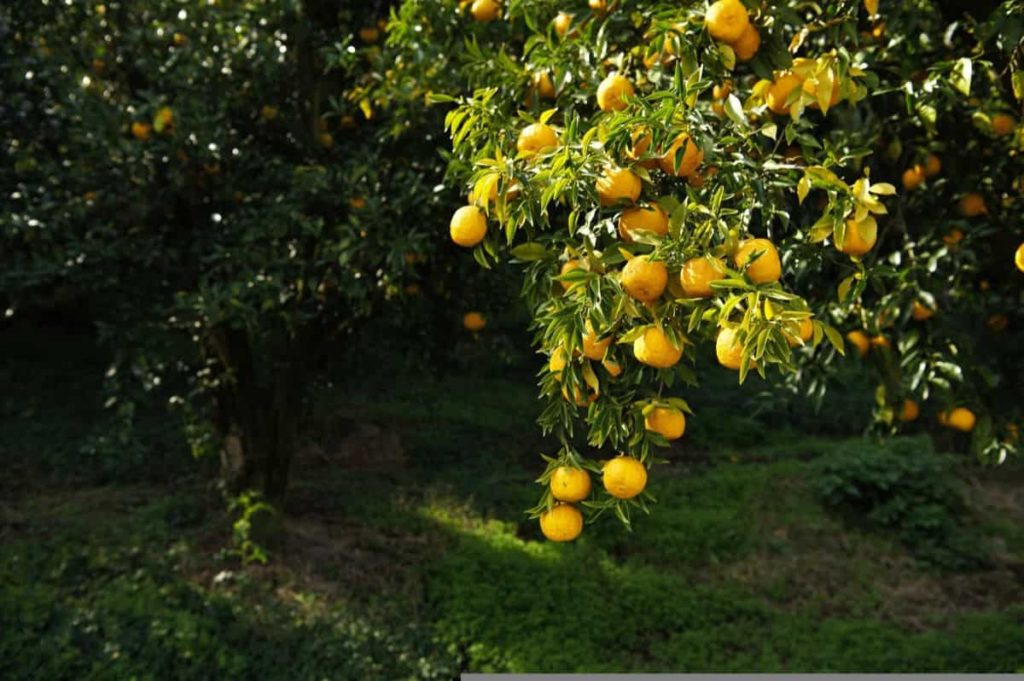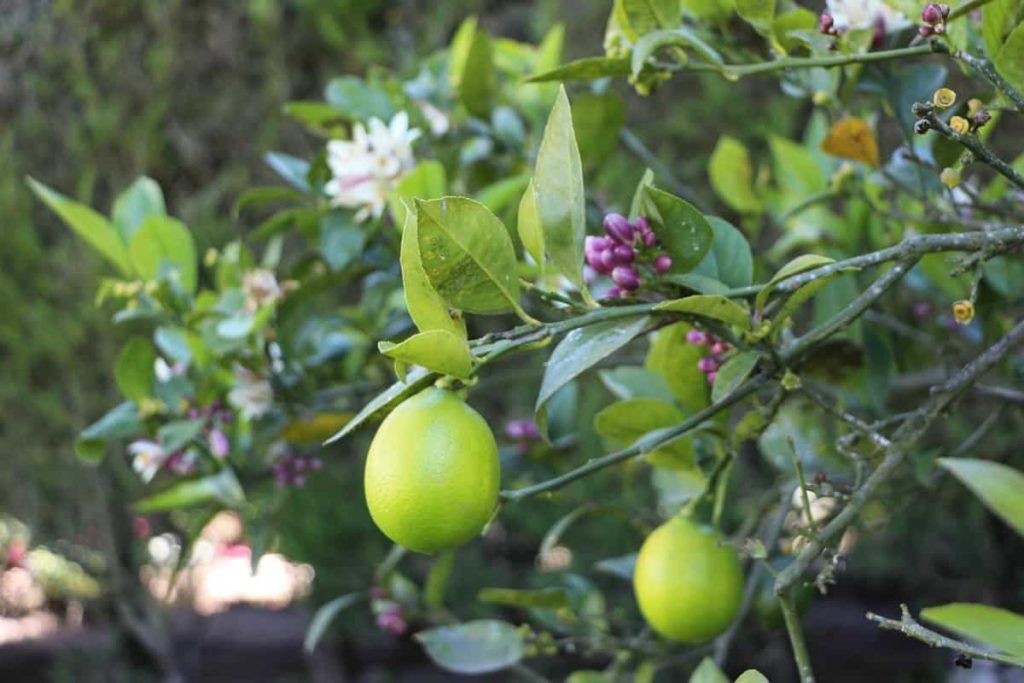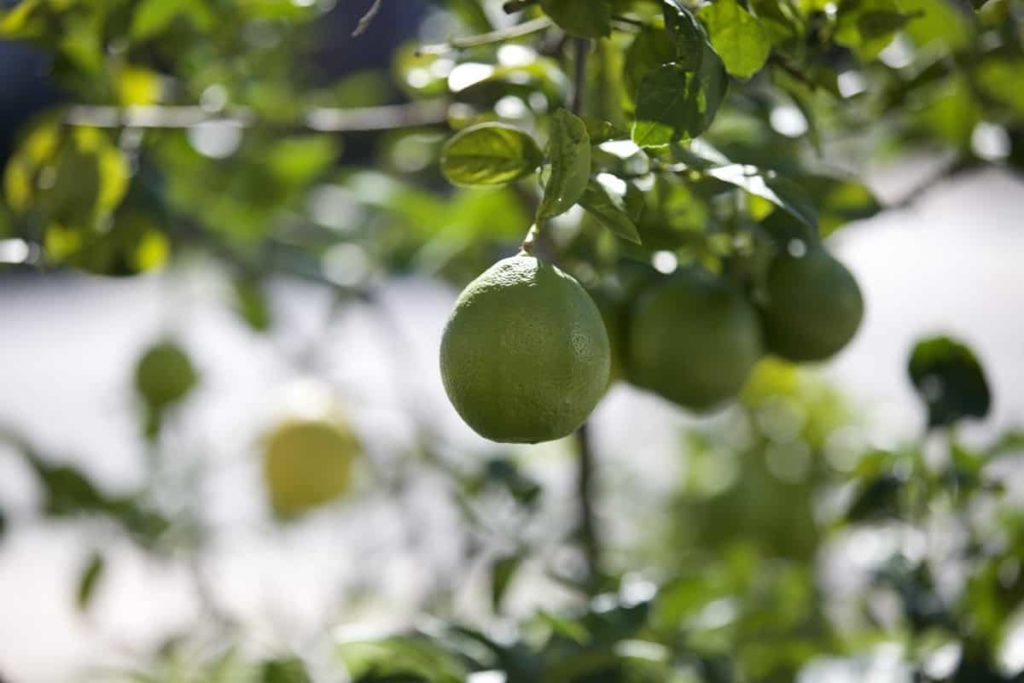Lemon trees grow faster when compared to other Citrus trees. Lemon trees start bearing fruit a few years after planting, and the stages of growth of the Lemon tree are based on its life cycle is repeated every year. Lemon is one of the main categories of citrus. It is mainly known for its pulp and juice worldwide. The gardener with Lemon trees in their yard often faces so many questions. Here are the solutions to the common questions about Lemon trees in the home garden.

How to grow Lemon from seed to harvest
How long does it take to get Lemon from a Lemon seed?
- The average age of Lemon trees is over 50 years. However, a strong tree can survive more than 100 years with proper care and disease prevention methods. Propagating from Lemon seeds is a relatively simple process. However, you may need patience and realize that you may not get precisely the same Lemon from your experience in propagating Lemon seeds.
- A healthy Lemon tree will start bearing fruit between 3 to 5 years and continue to do so until its death. After a tree blooms, it takes 4 to 12 months before harvesting, usually between summer and winter. Flowers appear most in spring; the fruit develops in summer and then slowly turns from green to yellow in the fall or winter. Most Lemon trees take 6 to 9 months to harvest after successfully pollinating indoors. Of course, your Lemon tree can produce fruit even if you don’t pollinate it, but if the fruit is pollinated, it will grow.
How many seeds does a Lemon have?
The average Lemon contains 8 to 10 seeds. Bush Lemon has thick skin, many seeds, and a strong taste. Lemon seeds are nestled inside the pulp near the center of each fruit. Their numbers and sizes vary by type but are hard, wrinkled, white, oval, or oval, and about 3/8 inches long. Verna Lemon is virtually seedless and has less juice than Eureka Lemon.
Which citrus can you grow from seed?
You can easily propagate Lemon from Lemon seeds. Whether the fruit came from the grocery store or the farmers’ market, if it contains seeds, you can grow them. Orange, Lemon, including Meyer Lemon, and other citrus varieties such as Tangerine, Clementine, Mandarin, Lime, kumquat, and Grapefruit with seeds are all candidates.
How many Lemon seeds do you need to grow a tree?
You can plant 5 to 10 Lemon seeds at a time if some do not sprout or make it beyond the seedling hood. However, remember that the trees coming from the seeds are not similar to the parent tree from which they came. Sometimes, the fruit that new plants produce is of low quality. You should plant several Lemon seeds about 1/2 inch deep to increase the chances of propagation of Lemon seeds. Slightly moisten the soil and cover it with plastic wrap on the pot to help water retention. Keep the soil moist but not soggy.
What are the stages of a Lemon?
- Germination – This is the phase when seeds will grow some roots and leaves with small green leaves.
- Young Seedling – This is the phase of the seedlings. Still, the Lemon tree is a small plant with some sprouted roots and some leaves.
- Mature Lemon tree – Your Lemon tree is already a mature plant at this stage. It has a strong stem and more hard leafy leaves. You will get the best Lemon tree when you give enough sunlight, water, and fertilizer. You need to keep your Lemon tree healthy to bear fruit at this stage.
- Flowering – This is where your Lemon tree flower will start blooming. At this stage, your Lemon tree should be about 2 to 5 years old, and smooth white flowers will start appearing.
- Fruiting – This is when your Lemon tree will produce some fruit for the first time from its flowers. Lemon fruits will be green when they are young.
- Harvesting – This is the stage where the Lemon tree matures, and Lemon fruits are ready for harvesting. Lemon fruit is green to yellow and has smooth skin.
In case you missed it: 24 Common Lemon Tree Problems: How to Fix Them, Solutions, and Treatment

How do I encourage my Lemon tree to produce fruit?
- Lemon trees require well-drained, sandy soil of pH between 6 to 7.5 to thrive. Poorly drained soil can damage root disease and prevent growth. Place your new pot plant in a semi-shade and not in the full sun so that it adjusts to a new place. Once you see new leaves crop, it’s time to move them into the full sun, where the plant gets good sunlight for at least 5 hours.
- Water newly planted Lemon trees every other day for the first week and then for two months once or twice a week. Water mature Lemon trees only every seven to 14 days when the weather is dry. Water is the key to solving the problem of Lemon trees not flowering. Water only when the top four inches of soil are completely dry; water them well.
- Fertilize the Lemon tree with nitrogen fertilizer every month for the first year, from spring to summer. In later years, fertilizing every four to six weeks. Apply the fertilizer evenly to the ground above the roots. You cannot prune in late summer or fall, as pruning can cause new growth that is more likely to cause cold weather damage.
Is Epsom salt good for Lemon trees?
- Epsom salt is a form of magnesium and effective and easy soil modification to treat magnesium deficiency in Lemon trees. Your Lemon tree must have enough magnesium to thrive and produce for years. Dissolve about one tablespoon of Epsom salt in half a gallon of water. Apply to the soil around your tree. Repeat this process in a few weeks. If treating a planted, outdoor Lemon tree, sprinkle the soil around the Lemon tree with Epsom salts.
Why is my Lemon tree not fruiting?
- The first one to three years (and perhaps more), the Lemon tree will focus its energy on developing and storing energy and nutrients. A lack of flowers means your tree can’t produce. Some of the reasons for this will be wrong cultivation, lack of nutrients, inadequate water, and bad rootstocks. However, if the plant blooms but still fails to take fruit, it could be because the tree is not old enough.
- You may fail to fertilize the tree with citrus or rose food in August and February. Lemon fruits drying up due to poor water. You should water them once a week for at least 15 minutes to prevent the drop of fruit. Severe wet weather for a long time can also cause fruit deficiency. Exposure to cold is a common reason why Lemon trees lose their flowers without bearing fruit. Lemon trees don’t tolerate much cold and are usually more sensitive to cold than warm.
Why do leaves on the Lemon tree turn yellow?
- Often yellow leaves or chlorosis on a Lemon tree are caused by overwater or lack of nutrients. Lemons require regular water, especially during warm months but giving more water can drain nutrients from the soil and cause root rot. Also, they cannot take the plant’s nutrients if the roots get damaged. Key indicators of overwatered Lemon trees include premature leaf drop, yellow leaves, and the presence of mold at a growing surface near the base of the plant.
- Stress from low temperatures also can make your Lemon tree leaves yellow and fall. If the Lemon tree experiences frost, it can die back. Mature Lemon trees are hard than small trees, a small Lemon tree is more prone to cold, and its leaves turn yellow and fall.
In case you missed it: Best Fertilizer for Lemon Trees: Homemade, Liquid, Organic, Natural, Compost Manure and NPK

Should I prune my Lemon tree?
Prune Lemon trees lightly throughout the year and keep them as you wish. Citrus trees can also bear fruit throughout the tree, including in shady areas, so cutting back Lemon trees is unnecessary to improve light availability. Pinching encourages bushy growth; you can pinch-growing tips when a branch is about 5 to 6 inches long. The Lemon tree is pruned in the best way when new growth begins in spring (February to March). You can also do this in frost-free areas during the fall or late winter.
What is the best fertilizer for Lemon trees?
The best fertilizer for Lemon trees is 6-6-6. You can use a strong mix if needed, but it should not exceed 8-8-8. In general, during active growth (spring and summer), you should fertilize once every one to two months, and during the tree’s dormant periods (fall and winter), once every two to three months.
Fertilize the Lemon tree in spring with proper food, including the addition of phosphorus to encourage blooming and fruiting, and prune where necessary. The fruits will be set on the heads of branches, so removing only dead and problematic branches is better.
Can the orange tree pollinate the Lemon tree?
While they can pollinate each other, Orange and Lemon trees, don’t need cross-pollination because most citrus trees are self-fertile. In addition, Lemon trees are monotonous, so both their male and female reproductive organs are in the same tree. Lemon trees are pollinated themselves, so you don’t need an extra tree to produce fruits. However, if you see your tree is loaded with flowers that do not produce fruit and fall from branches instead, don’t worry. It is normal for some flowers to be sterile and fall from a tree.
Why are my baby Lemons falling off?
In many cases, Lemon fruit drops are caused by environmental factors you cannot control. Premature fruit drops are caused by sudden changes in temperature and heavy rains. Many factors can cause Lemon or other citrus trees to drop their fruits early. Stop watering when the water starts running out. If you have heavy clay soil, wait about 20 minutes and re-water (or modify the soil to improve drainage). Too much water drains nutrients out of the soil and does not put enough stress on the tree.
How do you get a Lemon tree to bloom?
- If your Lemon tree is not blooming, make some changes to encourage flowers to form. The indoor Lemons are notorious for not blooming because they don’t get enough chill hours. For Lemons, cool temperatures are about 16°C. In cold temperatures for at least a few hours daily in winter and early spring, leave the pot-lined Lemon trees at about 16°C. Lemon trees are all tropical plants, and they won’t bloom if they are in a constantly hot climate. Cold temperatures encourage the plant to bloom.
- Don’t panic if your young Lemon tree is not blooming. It is normal for trees to start blooming after three or four years. It is usual for trees to start blooming after three or four years. This is because your young tree needs more time to develop a strong root system to support all the fruits it produces.
Can you grow Lemon trees indoors?
- You can grow Lemon trees indoors. A new tree will grow in a container of 8 inches in diameter to start. The best pot for the Lemon tree is a terracotta or unglazed ceramic pot with drainage holes. Lemon trees grow well in well-drained soil, and the type of pot you choose can play an essential role in promoting good drainage and preventing root rot. Lemon trees need good drainage, so make sure the pot has drainage holes. They will also need to be given water regularly. If the container in which the Lemon tree is growing is allowed to dry, the leaves of the Lemon tree will fall.
- When Lemon trees are grown in containers, the requirements are very similar to the Lemon trees grown in the ground. Growing indoors deprives Lemon trees of some ideal growing conditions, which can reduce their age. Indoor plants rarely live like outdoor grown Lemon trees. Pot-bearing Lemon fruit trees survive 30 years.
In case you missed it: Lemon Gardening For Beginners, How To Start, FAQs

How often should I water my Lemon seeds?
Keep the soil moist until the plant has about 4 to 5 leaves, then water about once a week. The soil should not be dry more than the first inch. Water any newly planted Lemon trees every other day for the first week and then for two months once or twice a week. Water mature Lemon trees only every seven to 14 days when the weather is dry.
Can I dry Lemon seeds before planting?
You can plant extracted seeds, but completely dry the seeds on nonstick paper or aluminum foil before planting them for the best chances of growing. Keep seeds directly out of sunlight. If you are not ready to plant seeds, dry seeds with fungicides to prevent rot and store them in polyurethane bags. The Lemon seed storage in the fridge will last several days to several months. After that, you can put Lemon seeds in a glass of water overnight and then plant them the next day.
Can I propagate Lemon from a cutting?
It costs little time or money to root out a branch to grow a new tree, but patience is required. Branch cutting becomes a complete, new plant similar to a parent plant. Branches less than a year-old work best to grow trees. It is better to cut the Lemon tree in late spring or early summer to propagate.
Choose a 15-centimeter piece of the healthy young branch without fruit or flowers and at least two to three nodes on base. When its roots begin, cutting will start to develop new ones. It usually takes 6 to 12 weeks, although it can take two months in cool conditions. Dip 2 inches under the bite into the liquid hormone rooting mix.
Why are my Lemons so small or big?
In dry months the fruit will be small if the tree gets insufficient water. Or check the variety of the Lemon plant. Mayor Lemons are smaller and rounder than regular Lemons, with smooth, thin, deep yellow to orange skin and dark yellow pulp. If your Lemon tree starts producing big Lemon with very thick skins that don’t taste so good, they’re probably coming from your tree rootstock, Pomelo, or some other form of grapefruit.
Why does Lemon have no juice?
If you forget to water the Lemon tree, you get dehydrated, soft Lemon fruit. Soft Lemon can also be attributed to the disease. Many diseases can result in soft Lemon fruit, especially if Lemons soften before ripening. If the Lemon tree is under water stress while trying to produce fruit, the final product will likely be bitter or dry and tasteless.
Dried Lemons are usually caused by dehydration during summer as fruit is formed. You can’t get moisture in your current season’s Lemon, but you can solve this problem so it doesn’t happen next year by watering more regularly.
In case you missed it: Lemon Growing Tips, Ideas, Secrets, and Techniques

Why is Lemon skin so thick?
The main reason for this is nutritional imbalance. Although citrus is easy to care for, it will affect fruit growth if they don’t get the proper nutrients. Too much nitrogen is often the problem; it can come from thick layers of compost or using the wrong fertilizer.
What is the lowest temperature a Lemon tree can handle?
- The Meyer Lemon trees are very cold-hardy and can withstand temperatures up to about 20°C. If your area cools down more, you must plant it in a container and brought in when the temperature falls. But the winter heat can dry them when they are indoors.
- The Winter season has been tough on plants. It is essential to understand how cold temperatures affect citrus trees. Citrus varieties most easily killed or damaged by freezing weather include Lemons and limes. Temperatures of 20°C will kill or cause severe damage to these plants.
How quickly do Lemon trees grow?
The majority of Lemon trees grow about 6 to 12 inches every year. However, over time they can depend on different types up to 20 feet tall or even more. It all depends on the type of Lemon tree you are growing and their growing conditions. While some Lemon varieties can be up to 20 feet long, a Meyer Lemon tree will naturally reach 10 to 15 feet long. The seed plant will take about five years to start fruit. A plant with a few fruits and flowers, so you know it’s a fruity grafted variety.
Is vinegar good for Lemon trees?
If your soil is at risk of being too alkaline, you can gradually make it more acidic by adding vinegar to the soil. The best solution is to encourage a healthy soil ecosystem that naturally improves pH or provides acidity by mulching and watering the soil with 1/4 to 1/2 cups of white vinegar in 2 gallons of water.
Why are the new leaves on my Lemon tree so big?
Lemon leaves are long and oval. They are 2.5 to 4.5 inches long in size. Many Lemon leaves contain a petiole or a small connector tissue that adds the leaf to the stem. The edges of the leaves are fine-toothed. If the growth of new leaves on your tree is much higher than the existing or original leaves, it may need extra sunlight. Trees grown indoors without a bright sunny window or trees grown in shady places outside will produce large leaves.
What causes the leaves on my Lemon tree to curl?
Lemon trees have high water requirements, and their growth stops significantly when there is a lack of water. If the Lemon tree is not getting enough water, you may also see excessive leaf curling. Citrus leaves can curl when the temperature is cold or in extreme heat, some pest attacks such as scales, mealybugs, mites, or aphides will cause leaves to curl and overwater. Adjust the water in terms of weather.
In case you missed it: Growing Lemon Trees Hydroponically – For Beginners

How many Lemons does the Lemon tree produce?
Three years old, a young Lemon tree can produce 38 pounds of Lemon every year. With complete maturity, a pot Lemon tree can be expected to yield half its outdoor counterpart. You can get 3 to 4 crops a year.
Conclusion
Lemon trees are used well worldwide and are valuable for their shiny green leaves, plentiful fruit, and aromatic flowers. Some Lemon trees bloom fast throughout the year, while others bloom in spring. The above information tells you about the proper growing conditions to encourage the tree to grow properly.
- How to Grow Tomatoes Organically at Home: A Comprehensive Guide
- Organic Gardening on a Budget: Low-Cost Methods and Materials
- Gongura Seed Germination and Planting Methods
- Cabbage Seed Germination and Selection
- Broccoli Seed Germination and Selection
- Asparagus Seed Germination and Variety Selection
- Seasonal Flower Gardening: Best Practices for Spring, Summer, Fall, and Winter
- How to Grow Hibiscus from Flower
- Plantation Ideas for Home Decoration: A Beginners Guide
- Flower Garden Designs and Layouts for Beginners
- Planting and Spacing Techniques in Papaya: A Beginner’s Guide
- Growing Gold: Essential Techniques for Planting Pineapples
- How to Make Kalanchoe Plant Bushy: Home Remedies and Solutions
- 11 Reasons Why Your Gardenia is Not Blooming: Home Remedies and Solutions
- Eco Elegance: The Guide to Designing a Drought-Tolerant Landscape
- Gardening on a Slope: Strategies for Hillside Landscaping
- Nourish and Flourish: Top Organic Mulches for Thriving House Plants
- Everything You Want to Know about Indian Mogra Flower: Discover Uses and Growing
- Green Thumb Success: Expert Tips for Cultivating Greenhouse Pumpkins All Year Round
- Maximize Growth & Flavor: The Ultimate Guide to Companion Planting in Herb Gardens
- How to Control Rhododendron Problems Naturally: Home Remedies and Organic Ways to Fix Them
- Natural Magic: The Remarkable Benefits of Cinnamon for Plants
- Best Steps to Revive Dying Tulip with Natural and Organic Treatment
- 10 Reasons Why Your Angel Trumpet is Not Blooming: Remedies and Treatment
- How to Fix Periwinkle Leaf and Flower-Related Problems: Natural Remedies and Solutions
- How to Fix Zinnias Leaf and Flower Problems: Discover Natural and Home Remedies
- Organic Steps to Induce Lemon Tree Flowers: A Comprehensive Guide
- Bloom Booster: Crafting the Perfect Homemade Bougainvillea Fertilizer
- Optimizing Growth: A Guide to Applying NPK Fertilizer for Potted Plants
- 10 Best Homemade Fertilizers for Rubber Plant: DIY Recipes and Application Method
- How to Boost Female Pumpkin Flowers: Effective Steps for More Flowers and High Yields
- Transform Your Indoor Garden: Top Benefits of Pink Salt for Houseplants
- 10 Best Homemade Fertilizers for Peacock Plants (Calathea): Easy DIY Guide
- Unlock Blooms: 9 Reasons Why Your Potted Chrysanthemum is Not Blooming
- 8 Reasons Why Your Potted Hibiscus is Not Blooming: Fix it with Simple Solutions
- Unlock Blooms: 9 Key Reasons Your Potted Frangipani Won’t Flower